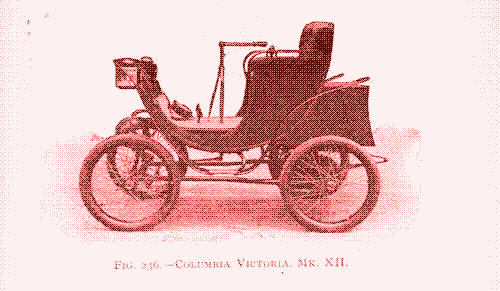
Electric motors and batteries have improved substantially over the past one hundred years, but today’s much hyped electric cars have a range that is - at best - comparable to that of their predecessors at the beginning of the 20th century. Weight, comfort, speed and performance have eaten up any real progress. We don’t need better batteries, we need better cars.
The 2010 Nissan Leaf and Mitsubishi i-MiEV have exactly the same range as the 1908 Fritchle Model A Victoria: 100 miles (160 kilometres) on a single charge
From about 1895 to the mid-1920s, and following the bicycle craze of the 1890s, electric cars shared the road with petrol and steam powered cars. EV’s were comparatively slow, heavy, and had a smaller range than their alternatives. During the very early years, however, electric automobiles were the most popular option for a short time, mainly because of two reasons.
Firstly, they were easy to start, while a gasoline car had to be cranked up and a steam powered car required a long firing-up time (not unlike a wood gas car). Secondly, there were few paved roads outside the city at the turn of the 20th century, which made the limited range of EV’s not that problematic. The production of electric vehicles peaked in 1912: during that time there were 30,000 EV’s on the road in the United States, two-thirds of these were used as private passenger cars. Europe had around 4,000 electric vehicles.
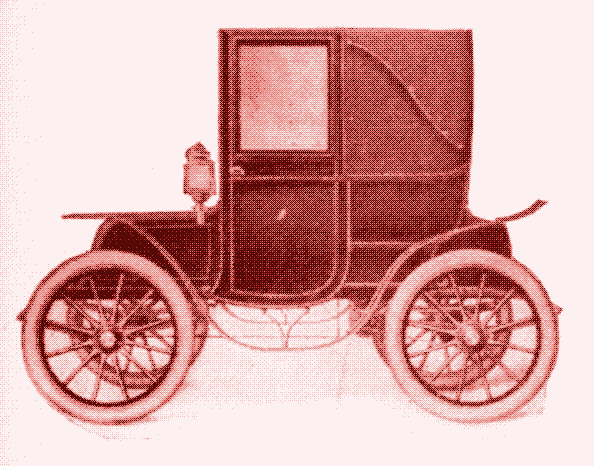
By 1912, the gasoline car had already taken over the largest share of the automobile sales (more than 90 percent). They were faster and could drive longer distances - not only because of their better range but also because of a more elaborate refuelling infrastructure. The rapidly expanding paved road network worked in their favour, too.
Internal combustion engines became much cheaper than electrics. In 1908, Ford introduced its mass-produced (and gasoline powered) Model-T, which initially sold for 850 dollars - two to three times less than the price of a similar electric vehicle. In 1912, the price of the Model-T came down to 650 dollars. That same year, the electrical starter for gasoline vehicles appeared, and took away one of the last selling points of EV’s. Last but not least, gasoline had become much cheaper than it had been at the end of the 19th century.
The only advantage left was the (potential) cleanliness and noiselessness of electric vehicles, the reason we want them back today. In 1914, Henry Ford announced the marketing of a cheap mass-produced electric vehicle, but this automobile was never produced. In Europe, electric passenger cars were gone in 1920, in the US they survived for a decade longer. Electric trucks, outside the scope of this article, remained successful for a longer period.
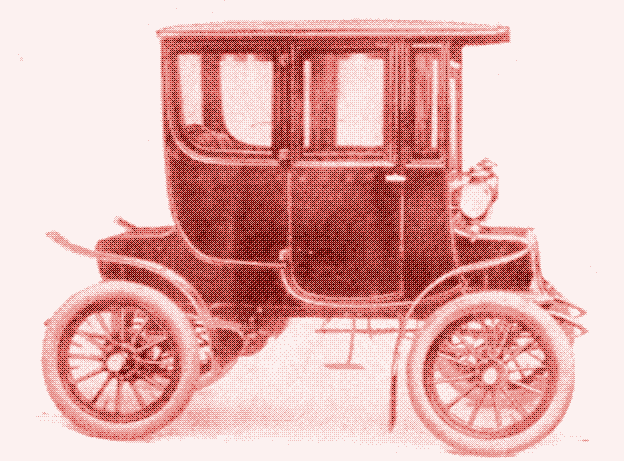
The manufacturers of early electric cars made several strategic mistakes. For instance, it took them until 1910 to develop a standard for the charging of the batteries. But, at the heart of the failure of the early electric car lay the limited capacity of the storage battery.
Then and now: 100 miles
If today’s supporters of EV’s would dig into the specifications and the sales brochures of early 20th century electric “horseless carriages”, their enthusiasm would quickly disappear. Fast-charged batteries (to 80% capacity in 10 minutes), automated battery swapping stations, public charging poles, load balancing, the entire business plan of Better Place, in-wheel motors, regenerative braking: it was all there in the late 1800s or the early 1900s. It did not help. Most surprisingly, however, is the seemingly non-existent progress of battery technology.
The Nissan Leaf and the Mitsubishi i-MiEV, two electric cars to be introduced on the market in 2010, have exactly the same range as the 1908 Fritchle Model A Victoria: 100 miles (160 kilometres) on a single charge. The “100-mile Fritchle” was a progressive engineering feat for its time, but it was not the only early electric that boasted a 100 mile range. I have only chosen it because its specifications are most complete, and because its range was certified.
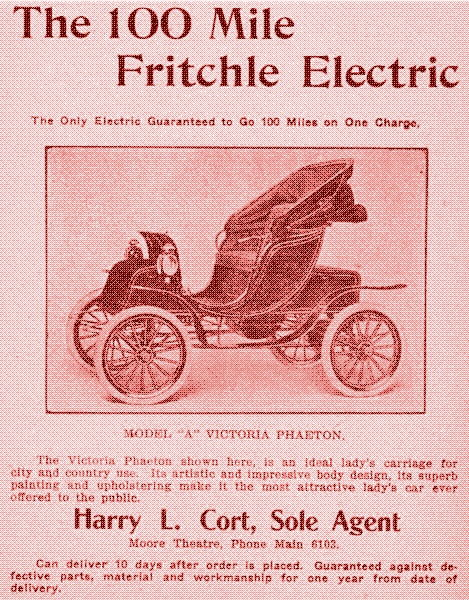
The first electric cars (1894 - 1900) had a range of 20 to 40 miles (32 to 64 kilometres), still better than the 20 km “range” of a horse. The average second generation EV (1901 - 1910) already boasted a mileage of 50 to 80 miles (80 to 130 km). The third generation of early electric cars (1911-1920), including larger vehicles that could seat 5 people comfortably, could travel 75 to more than 100 miles (120 to more than 160 km) on a single charge - and this is still the range of electric cars today. (See our overview on early electrics for the specifications of individual vehicles).
100 miles = upper limit
In fact, the range of the Nissan Leaf or the Mitsubishi i-MiEV may be far worse than that of the 1908 Fritchle. The range of the latter was (officially) recorded during an 1800 mile (2,900 km) race over a period of 21 driving days in the winter of 1908. The stock vehicle was driven in varied weather, terrain and road conditions (often bad and muddy roads). The average range on a single charge was 90 miles, the maximum range recorded was 108 miles. (sources: 1 / 2 ).
In fact, the range of the Nissan Leaf or the Mitsubishi i-MiEV may be far worse than that of the 1908 Fritchle
The range of the Mitsibushi i-MiEV and the Nissan Leaf was tested in a very different manner. On rollers instead of on actual roads, and in a protected environment, but that’s not all. Both manufacturers advertise the US “EPA city” range, a test that supposes a 22 minutes drive cycle at an average speed of 19.59 mph (31.5 km/h), including one acceleration to 40 mph (64 km/h) during no more than 100 seconds.
Critics blame today’s manufacturers for not displaying the “EPA combined cycle” range, which also includes trips on the motorway (the “EPA highway cycle”). Contrary to vehicles with an internal combustion engine, electric cars are more fuel efficient in cities than at steady speed on a highway - an electric motor uses no energy when it is idling, and regenerative braking works best in city traffic. Darryl Siry, former CMO of Tesla, estimates that the correct range of the Nissan (and other modern electric cars) will be around 70% of the advertised range. That would bring the range of today’s electrics to the same level as the 1901 Krieger Electrolette (68 miles).
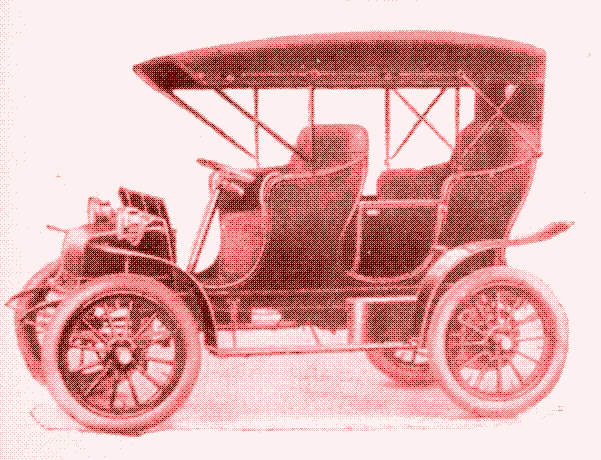
Even the “EPA combined cycle” figures should be considered as an upper limit. Firstly, with an average speed of 48 mph (77 km/h) the highway tests are outdated. Secondly, the range of a car is also affected by other factors: not only excessive speeding and fast accelerations, but also the use of headlights at night, the use of heating or air-conditioning, the use of other options onboard, driving over hilly roads or in headwinds - or all of these factors combined (the EPA has added new test cycles in 2008 to address these points, but the results are not yet available for the EV’s we are talking about).
Some of these factors not only concern today’s electrics, but also those of yesteryear. However, the Fritchle’s range was tested on varied terrain and in varied weather conditions, which was not the case for the Nissan or the Mitsubishi. Moreover, early electrics had no air-conditioning and few had heating systems - drivers and passengers dressed warm in winter. Mitsubishi warns its clients that the use of the heater might cut the range in half. All in all, the range of a 2010 electric vehicle will be closer to 50 miles (80 km) than to 100 miles (160 km). And that’s to be expected from a battery at the beginning of its life - after 5 years, the capacity will be at least 20 percent less.
Better batteries
In spite of this, the 2010 vehicle has a much better battery under the hood than the 1908 vehicle. The Fritchle Electric had lead-acid batteries, like all its contemporaries, with an energy density between 20 and 40 Wh/kg (early 1900 batteries had energy densities of only 10 to 15 Wh/kg). The Nissan and the Mitsubishi have a more powerful lithium-ion battery with an energy density of around 140 Wh/kg.
The Nissan’s battery can thus store 3.5 to 7 times more energy for a given weight than an average early electric from about 1910. This could have resulted in a vehicle with a 3.5 to 7 times better range (350 to 700 miles or 560 to 1,130 km), but this is not the case. The technological improvements could also have been translated into a 3.5 to 7 times lighter (and smaller) battery, and consequently a lighter and more fuel efficient vehicle, but this is not the case either.
The battery of the Nissan Leaf is only 1.6 times lighter than the battery of the Fritchle: 220 kg (480 pounds) versus 360 kg (800 pounds). The Nissan vehicle (including the battery) weighs more than the Fritchle: 1,271 kg (2,800 pounds) versus 950 kg (2,100 pounds).
Motor output, speed & acceleration
The most obvious difference between the specifications of the old and new cars is the power of their motors. The 1908 car had a 10 HP motor, the 2010 car has a 110 HP motor. In other words, the Nissan Leaf has the motor output of 11 electric Fritchles. The smaller and lighter Mitsubishi i-MiEV (1,080 kg or 2,400 pounds) has the motor power of 6.5 electric Fritchles.
The maximum speed of the Fritchle was 40 km/h (25 mph), the Nissan does 140 km/h (87 mph) and the i-MiEV is not far behind (130 km/h or 81 mph). Acceleration data cannot be compared, but there is no doubt that the 2010 cars will accelerate many times faster (and can climb hills much more easily) than their early 1900 cousins. Today, fast acceleration times are one of the selling points of EV’s.
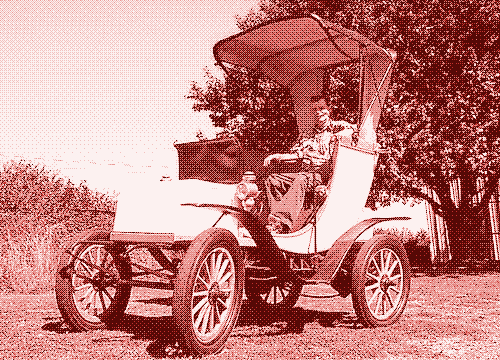
The risks of more powerful electric motors were already recognized in the early 1900s. The Hawkins Electrical guide (1914) states:
“Very quick acceleration is an objectionable feature in electric vehicle design, because a vehicle constructed with this feature puts a heavy overdraft on the battery”.
A few years earlier, members of the Electric Vehicle Association of America tried to impose a standard maximum speed of 32 km/h (20 mph) for electric vehicles, because power requirements increased rapidly above that limit. They feared that higher speeds would threaten the all-important range of the automobiles. They did not succeed. Too many manufacturers tried to compete with gasoline cars (and with each other) by designing faster electric vehicles.
A car consumes 4 times more fuel to drive twice the speed, so it seems clear that velocity is the reason why the range of today’s electric cars did not improve in spite of better batteries. However, it is more complicated than that. The “EPA-city” range that the modern EV’s advertise, is based on an average speed of 20 mph or 31 km/h - below the 25 mph top speed of the Fritchle, and almost exactly the same as the speed at which the vehicle could drive 100 miles on one charge.
While high speeds are definitely a significant factor when considering the real-world range of today’s electric cars, it cannot explain the disappointing “official” range. Faster acceleration might play a role, but the EPA-tests described above do not consider aggressive driving either so there must be other factors at play.
Oversized cars & motors
The first is weight. While the battery of the Nissan is lighter than the battery of the Fritchle, the Nissan vehicle including the battery is 321 kg (706 pounds) heavier. Without the battery, the Nissan weighs almost twice as much as the Fritchle: 1,051 kg (2,310 pounds) versus 590 kg (1,300 pounds).
So while batteries became more than 3 times lighter in 100 years time, the weight of the vehicle itself (without battery) doubled. The extra weight of the Nissan already nullifies a significant portion of the progress: a 35 percent higher mass can lead to a 28 percent reduction in range (sources: 1 2).

The second factor is directly related to the massive increase in horse power. Electric motors are (generally) most efficient around 75 percent of their rated load. Their efficiency drops dramatically below 25 percent. The Fritchle was most efficient at a speed of around 20 mph. The much more powerful motor of the Nissan Leaf, however, is most efficient at a speed of around 105 km/h, far above the average speed in the tests. Today’s EV’s consume less energy at low speeds than at high speeds because of other factors, but compared to early electrics with their much less powerful motor they are probably less efficient at speeds of around 20 mph. (source - pdf).
Computers on wheels
The third factor is the electronics. Modern cars have, depending on the model, 30 to 100 microprocessor-based electronic control units onboard (source). These computers add weight but also consume energy in a direct way. Part of this direct energy consumption is not included in the EPA-tests - electronically adjustable windows and mirrors, for example.
The risks of more powerful electric motors were already recognized in the early 1900s
However, many other electronics are activated whenever the vehicle is driving. Examples are power brakes, active suspension, safety sensors, dashboard instrumentation and the management of the battery itself (not required for a lead-acid battery but critical for lithium-ion storage technology). All this electrical energy has to be supplied by the battery.
Tesla Roadster
Some of you might wonder why I don’t compare the 1908 Fritchle to the 2008 Tesla Roadster. This car has a range of 244 miles (393 kilometres), 2.44 times better than the old timer and the modern Japanese cars - and this according to the “EPA combined cycle”, not the “EPA city” figures. (Although the “EPA-combined” range advertised by Tesla is of course as much suited for a sports car than the “EPA-city” range is suited for a family vehicle like the Nissan Leaf ).
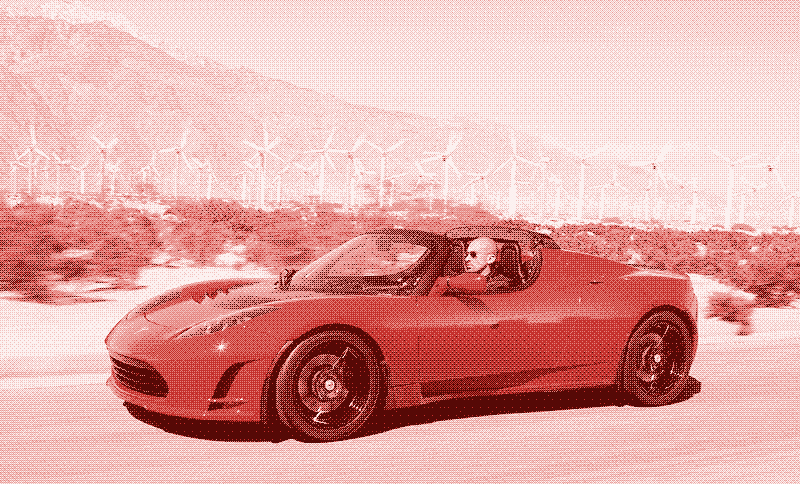
The Tesla Roadster is less progressive than it seems, though. The battery of the sports car weighs twice as much (450 kg) as the battery of the Nissan (220 kg). Since both batteries have a similar energy density, you don’t have to be a rocket scientist to calculate that the heavier battery has about twice the capacity: 53 kWh to be exact, compared to 24 kWh for the Nissan’s battery (and 16 kWh for the i-MiEV). Considering the fact that both cars have a similar weight, a 2.5 better range for a battery with more than double (2.2 times) the capacity is far from a revolutionary engineering feat.
Embodied energy of EV batteries
Doubling battery capacity is one way to increase the range of an electric vehicle (see also the Mini E, which sacrifices its rear seat for a larger battery and gets 104 miles), but this option is far from sustainable since it also doubles the amount of energy needed to manufacture the battery. It also doubles the costs, of course. The battery of the $ 109,000 Tesla Roadster sells for $ 30,000, as much as an entire Nissan or Mitsubishi vehicle.
Nobody has investigated how much energy it takes to produce a Tesla Roadster battery, or any other EV battery for that matter, but you can get an idea of it using an online tool from Carnegie Mellon University. Corresponding to these data, $ 30,000 of economic activity in the storage battery sector (including the production of li-ion batteries) equals an energy consumption of 23,222 kWh - that’s almost 6 years of electricity consumption by an average British household. The battery has to be replaced after a maximum of 7 years.
The low “fuel” costs are only half the story if the “fuel tank” itself is that energy-intensive.
These figures suggest that the embodied energy of the battery - not considered in any research paper that investigates the ecological advantages of electric cars - makes up for a substantial amount of the total energy cost of an electric automobile. At the advertised energy use of 21 kWh per 100 miles, 23,222 kWh would take the Tesla 109,938 miles (176,929 km) far. That’s almost 30,000 km (18,600 miles) per year, or 80 km (51 miles) per day. The low “fuel” costs are only half the story if the “fuel tank” itself is that energy-intensive.
Miracle battery
Today, just like 100 years ago, EV proponents are divided on the question of how to market electric vehicles. Some keep emphasizing the fact that most people never drive further than 30 miles per day - therefore the current batteries are well suited to perform their task. Most cars will be charged overnight, battery-swapping stations and fast-charging will do the rest.
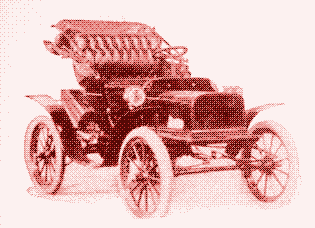
Others, however, keep hoping for a revolutionary storage technology that will eventually give EV’s a similar range to that of gasoline cars. This belief is supported by press releases like this: “Nanowire battery can hold 10 times the charge of lithium-ion”. It is interesting to note that the arrival of such a miracle battery has been “just around the corner” for over 100 years now:
“A large number of people interested in stored power are looking forward to a revolution in the generating power of storage batteries, and it is the opinion of many that the long-looked-for, light weight, high capacity battery will soon be discovered.” (source, 1901).
“The demand for a proper automobile storage battery is so crying that it soon must result in the appearance of the desired accumulator [battery]. Everywhere in the history of industrial progress, invention has followed close in the wake of necessity” (Electrical Review, 1901).
Edison himself promised a radical improvement to the lead-acid battery at the turn of the 20th century. It took almost a decade before the Edison battery appeared on the market, and even though it had some advantages over the others, it was very expensive (the price of a gasoline powered Ford Model-T) and far from revolutionary.
The promise of a miracle storage technology reared its head again in the 1960s and 1970s, when electric cars went through a short revival:
“The consensus among EV proponents and major battery manufacturers is that a high-energy, high power-density battery - a true breakthrough in electrochemistry - could be accomplished in just 5 years” (Machine Design, 1974).
The range of most electric (concept) cars in the 1960s and 1970s was considerably lower than that of early 1900 electrics. This was because they were still making use of similar lead-acid batteries, while the cars themselves were already much heavier and more powerful.
Realistic electric vehicles - scenario 1
The miracle battery might one day arrive, but history teaches us not to count on it. What would definitely yield results, on the other hand, is to use existing technology and downsize the car. There are two ways to do this, as was briefly noted above. The first is to go back to early 20th century electric vehicles and equip them with modern batteries. This would extend their range spectacularly, as much as a (not yet existing) nanowire battery could.
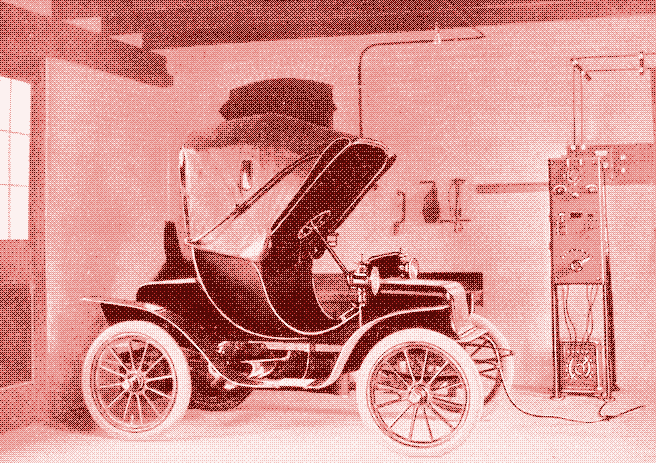
If you were to put the lithium-ion battery of the Nissan Leaf in the 1908 Fritchle, the vehicle would have a range of about 644 km (400 miles). If you put a lithium-ion battery with the same weight of the Fritchle-battery inside, you get about 700 miles (1,127 km) range. Add to this the fact that we now also have lighter and more efficient motors (and other vehicle parts) and the range will become even greater.
Even with the headlights and the heating on, driving home over windy hills and muddy roads, such a car would give a safe and comfortable range, similar to that of today’s gasoline vehicles. Moreover, it would consume less energy: the Fritchle used around 7 kWh/100 km, the Nissan Leaf at least 15 kWh/100 km.
A better range is much more than a convenience for the driver. It would also mean that we need fewer charging and battery swapping stations, which would greatly lower the costs and the embodied energy of the required infrastructure. In short, slower EV’s would make EV’s a whole lot more likely. Interestingly, we don’t even have to streamline them. Early electrics had style, and at low speeds aerodynamics is not an important factor in energy consumption.
Realistic electric vehicles - scenario 2
Of course, slow vehicles with the appearance of a horse carriage will not appeal to everybody. But there is another way. We could also downsize the electric car by designing much lighter and fuel efficient vehicles. This is shown by a concept EV like the Trev. This vehicle’s performance is comparable to that of the Nissan Leaf or the Mitsubishi i-MiEV: it has a top speed of 120 km/h (74.5 mph) and it accelerates from 0 to 100 km/h (60 mph) in less than 10 seconds.
We cannot have it all: range, speed and size. And yet, that’s what we are trying to do.
However, its battery is almost 5 times lighter (45 kg or 99 pounds) and the vehicle itself (including the battery) weighs only 300 kg (660 pounds). In spite of its higher performance, it consumes as much energy as the Fritchle: 6.2 kWh/100 km, half the fuel consumption of the Nissan. Yet, the range of the Trev is similar to that of the Nissan or the Fritchle: 150 km or 93 miles. The reason is of course that if you design a much lighter vehicle, it will also have a much smaller battery that consequently holds less energy. With gasoline powered automobiles, the potential of weight reduction is much larger.
Nevertheless, a vehicle like the Trev would have almost as much benefits as a Fritchle with a 2010 battery. It would still require an elaborate charging infrastructure, but because of its much smaller battery it would seriously relieve the problem of peak demand: fast-charging could become a realistic option without the need to build hundreds of new power plants. It would also have the substantial advantage of holding a battery that is much less energy-intensive to produce.
We cannot have it all
Of course, there are many more possibilities than the two scenario’s outlined here. It would not kill us to drive at speeds of 20 mph, on the contrary, but there is so much potential in downsizing the automobile that we don’t have to go all the way back to the early 1900s to get a decent range.
We could tune them up a bit so that they could get 60 km/h or 40 mph (only sligthly faster than the 1911 Babcock Electric Roadster pictured above) and accelerate just fast enough to leave a crime scene or flee from a mad elephant.
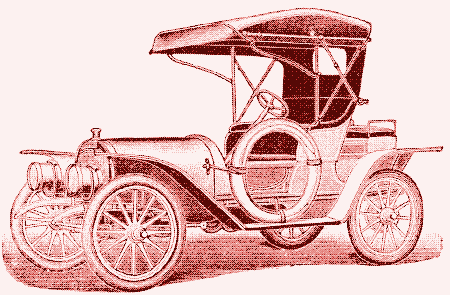
At 60 km/h or 40 mph a trip of 600 kilometres or 400 miles would take 10 hours, instead of 5 hours at a common motorway speed. This does not sound like the end of the world. It’s definitely a whole lot faster than going by foot (120 hours) or by bike (30 hours). We could also equip the Trev with a somewhat larger battery so that it gets a better mileage at the expense of a somewhat lower speed. Or, yet another possibility: keep the Trev like it is but limit its speed to that of the Fritchle.
If we want more speed, we have to sacrifice range. If we want more range, we have to sacrifice speed. If we want to keep the (energy) costs of the charging infrastructure within reasonable limits, we have to sacrifice speed or size. The lesson to be learned here, is that we cannot have it all: range, speed and size. And yet, that’s what we are trying to do.
Sources (in order of importance):
- “Horseless vehicles automobiles motor cycles operated by steam, hydro-carbon, electric and pneumatic motors”, Gardner Dexter Hiscox, 1901.
- “An illustrated directory of the specifications of all domestic and foreign motor cars and motor business wagons gasoline, steam, and electric sold in this country”, 1907.
- “The Electric Vehicle and the Burden of History”, David A. Kirsch, 2000.
- “The Electric Vehicle: Technology and Expectations in the Automobile Age”, Gijs Mom, 2004.
- “Histoire de la voiture électrique”, Philippe Boursin (website). - “Motor cars; or, power carriages for common roads”, Alexander James Wallis-Tayler, 1897. Chapter on electric cars.
- “Court histoire de l’automobile électrique routière”, Bulletin de la Société d’Encouragement pour l’Industrie Nationale, July 1940 - June 1941.
- “Hawkins Electric Guide: questions, answers & illustrations volume 9”, Frank D. Graham (1914). Chapter on electric vehicles.
- “Salon de l’Automobile: les petites voitures”, La Nature, 1901.
- “Motor vehicles for business purposes; a practical handbook for those interested in the transport of passengers and goods”, A.J. Wallis-Tayler, 1905
- “Les voitures Electricia”, La Nature, 1901
- “Electric and Hybrid Cars: A History”, Curtis Darrel Anderson & Judy Anderson, 2005
- “Tube, train, tram, and car; or up-to-date locomotion”, 1903
- “Alternatives to the gasoline automobile” (.pdf), in “The Steam Automobile”, Vol.17, No.1, 1975 .
Reactions
To make a comment, please send an e-mail to solar (at) lowtechmagazine (dot) com. Your e-mail address is not used for other purposes, and will be deleted after the comment is published. If you don’t want your real name to be published, sign the e-mail with the name you want to appear.
Reactions
Rhamnus
We may not have it all, but it’s what we want and therefore the industry is working hard to satisfy our demands, even though they do not make much sense sometimes…
Yann Schutter
i would say many of the http://www.zapworld.com/ products meet your criteria (lightweight minimalist construction, cheap, speed limiters..)
People are buying them too.. I know there are several here in philadelphia.
,thank you for the great article
AJS
Is the TRIAC a consideration for the commuting crowd?
http://www.greenvehicles.com
$25K, 100 miles/charge, 2-seater. Not for everyone, but certainly making the electric car a reality today.
kris de decker
“You missed one pretty major thing about the Tesla”
No, I didn’t. You have to compare apples to apples. You are talking about a hypermiling record. So you have to compare it to the hypermiling records of the early 20th century:
Already in 1899, two American engineers covered 100 miles (160 km) on a single charge. In 1909, Emil Gruenfeldt of the Baker Motor Vehicle Company covered 160.8 miles (259 km) on a single charge in his Baker Electric Roadster. Two years later, he beat his earlier mark by travelling 201.6 miles (324 km) without recharging the batteries. Data of French record runs name a range of 190.76 miles (307 km) as early as 1901, set at an average speed of 17 km/h by Louis Krieger, a record that stood until 1942. So, again, even though the Tesla shows progress, it is not as spectacular as you would expect.
Concerning your second point, the electronics. It’s interesting you mention it, because it makes today’s batteries look even worse compared to their predecessors, not better. Lithium-ion batteries can only exist thanks to electronics. Lead-acid batteries did not need them. This is not doing the embodied energy of today’s batteries any good, because electronics are very energy-intensive to produce. See this article for more info:
http://www.lowtechmagazine.com/2009/06/the-monster-footprint-of-digital-technology.html
Jim
According to Wikipedia, the land speed record up until 1899 was with EVs, topping out at 65 mph, so EVs were hardly “comparatively slow, heavy,”
DC
RE #29: “Lithium Ion battery users do have to spend additional $$$ on advanced control electronics… but the batteries last SO much longer than Lead-Acid. They perform SO much better too.”
I just couldnt just let this nugget go. Li-on is so much better compared to what exactly? Li-on did NOT become the auto-cartels battery of choice because it is a ‘better’ or cheaper or longer-lasting chemistry. It was chosen precisely because it is expensive, environmentally hazardous, impossible to recycle in any meaningful way, and has a very short shelf-life. Does any of this remind you of anything? Li-on is a designed-to-fail battery. Claims that Li-on EV packs will last 5-10 years are based entirely on fantasy.
Li-on has all of the attributes the auto-oil cartel deems acceptable. Li-on has a short life cycle, thus it will provide a constant revenue stream to auto-makers in much the same way the 1000’s of largely unnecessary mechanical parts or electronic fluff do in current ICEs. They are expensive. Li-on is an inherently expensive chemistry due to all the safely controls that need to be built into it.
Haven’t you ever wondered why laptop replacement batteries are so expensive? Same idea. The high cost of Li-on also insures it is less of a threat to the ICE. Li-on powered EV’s will always be expensive, thus keeping the market safe for cheap, gas-powered trash bins. Li-on batteries cannot be recycled, only disposed of. Yet another moderately toxic substance that will clog our waste disposal stream.
Li-on’s alleged superior preformance has NEVER been demonstrated in any real-world conditons over an extended period of time. By this I mean at least one decade or more of reliable proven service. If you want to know what the future of your Li-on EV holds: just look at your laptop as an example. You can take a Li-on battery out of a notebook, store it according to recommended guidelines, and within a few years, it will be worthless, compeletey unable to hold a charge, even if NEVER used.
THAT is why the industry loves Li-on so much. It is a battery made to fail. Proven reliable, long-lasting chemistries like the NiHM or NiFE are nowhere to be seen. Either subject to patent hinderance by companies like chevron or simply buried or forgotten, instead were told Li-on is the battery of the future. A future that looks exactly like the past strangely enought. Planned obsolence for the battery age.
The other thing some of you dont seem to grasp or even question, is why Tesla had to hand-wire thousands of laptop batteries togther in the first place. That is not something a engineer or manufacturer imo, would go out of there way to do, just to prove it could be done. I would think, if Telsa could have simply bought large-format NiHM or even the technically inferior Li-on packs on the open market to power its car, why wouldn’t they just do that instead?
Of course, that gets you get into the murkey, surreal world of just how hard it is to actually source large-format battery packs on the so-called “open market”. What companies do make battery packs virtually to a one, refuse to sell them to anyone for auto-motive applications, or provide such impossible conditions of sale that almost no one can, or will bother. That subject alone is worth an article.
Mark Mitchell
The recent advances in ICE tech make possible conventional vehicles with embodied fuel consumptions far lower than electrics. Even very light small speed limited vehicles cannot begin to compete on that score with zero emission 60-80mpg conventionally powered vehicles in the near offing. Plus they have none of the limitations of any pure electric either current or contemplated. A small four passenger vehicle with modern safety features and conveniences, high-tech direct-injection small engines, highway mileages in excess of 60mpg, and prices in the range of two thirds to half of any currently contemplated electric are available now in Europe and soon here.
A small upscale ICE vehicle in the same price range as the iMiev would be a hyper-economical zero-emissions luxury vehicle by comparison while suffering exactly none of the Nissan’s limitations. That is one extremely tall order for any electric to match, to put it as mildly as possible, now or in the remotely foreseeable future. Considering how much lower the embodied fuel consumption costs would be for the ICE, and its piddling usage of conventional fuels, it’s a no-brainer for anyone with any serious appreciation of cost effectiveness in any terms one cares to discuss. And these vehicles are not “just around the corner”. They are here right now.
Bob Fearn
The best electric car article I have ever read and I’ve read a lot of them. Thanks.
Michael Murphy
Here are some specs on the Loremo:
http://www.loremo.com/englisch/02der02_varianten.htm
Engine/Power: 2 cyl turbo-diesel /28 HP
Top speed:106 mph
Mileage Rating: 120 mpg
Price: 17,000 euros
michal
Perfect article, however there is also Scenario 3: slight modification of current EV by adding troley on the top. Then from infrastructure point of view we need only to add the power cables above the main roads and highways.
If the car is using the main road, the power can be taken from above cables and batteries can be recharged simultaniously…
Because the driving pattern for most of drivers is too get on the main road ASAP. This should solve the speed and maximum distance.
Only guestion is overriding or passing the car attached to troley.
Kris De Decker
Finally, a life cycle analysis of electric cars:
http://www.notechmagazine.com/2012/10/life-cycle-analysis-of-electric-cars.html
Conclusion: Manufacturing one electric car takes as much energy as manufacturing two conventional automobiles:
“In contrast with ICEVs, almost half of an EV’s life cycle global warming potential (GWP) is associated with its production. We estimate the GWP from EV production to be 87 to 95 grams carbon dioxide equivalent per kilometer (g CO2-eq/km), which is roughly twice the 43 g CO2-eq/km associated with internal combustion engine vehicles (ICEV) production. Battery production contributes 35% to 41% of the EV production phase GWP, whereas the electric engine contributes 7% to 8%. Other powertrain components, notably inverters and the passive battery cooling system with their high aluminum content, contribute 16% to 18% of the embodied GWP of EVs.”
internete
¿Cuales son las diferencias entre los coches electricos de 1900 y 2010?
1.- Los coches de 1900 iban a 30 Km/h, los de 2010 a 130 km/h.
2.- El precio del litro de gasolina en 1900 era de 3 centimos de euro actuales. El precio actual es de 1.15 euros
3.- Las baterias de 1900 eran de plomo-acido con una vida media de 500 ciclos de recarga. Las de 2010 son de litio con 3000 ciclos de recarga.
4.- Las baterias de 1900 ocupaban todo un maletero (como puede verse en la foto), y alimentaban coches de 2 plazas, mientras que las de 2010
van en el suelo del vehiculo, bajando el centro de gravedad y dejan libre un buen maletero y 5 plazas para personas.
5.- En 1900 no habia una red electrica como tal. Se estaba empezando a desplegar, pero resultó mas facil hacer millonarios a los gasolineros, porque resultaba mas facil poner una gasolinera, que tirar una linea de alta tension. En 2010 hay electricidad por todas partes. Estos gasolineros millonarios se encargaron durante todo el siglo XX de hacer que cualquier avance en vehiculos electricos no fuera promocionado ni financiado.
6.- En 1900 habia cuatro gatos investigando el coche electrico, al igual que practicamente durante todo el siglo XX, porque los gasolineros convencieron a la gente de una “verdad absoluta: los coches electricos no son viables”. Verdad absoluta que aun siguen repitiendo como loros algunos foros pro-fosil. En 2010 se calcula que hay alrededor de 30.000 investigadores, cientificos y tecnicos afinando el coche del futuro.
7.- La prensa del siglo XX dejo claro que el coche que molaba era el de gasolina, y este es el que la gente compraba. Si surgia alguna noticia sobre coches electricos, se la silenciaba a golpe de talon. En 2010 tenemos internet y no se pueden silenciar las noticias.
internete
1234567
PD: ¿Sigo?… Creo que no, que no hace falta, porque los que han escrito este “articulo” sin duda conducen hoy un coche de gasolina, contaminando innecesariamente el aire que respiran sus hijos y los hijos de los vecinos, pero tienen tan claro como yo, que el proximo coche que adquieran, sera un coche electrico.
Joe Viocoe
“I just couldnt let this nugget go. Li-on is so much better compared to what exactly?”
I said Lead acid. Read please.
“It was chosen precisely because it is expensive, environmentally hazardous, impossible to recycle in any meaningful way, and has a very short shelf-life.”
3 out of 4 wrong! You must be trying for a record. You have obviously been led astray by lies. These are NOT laptop batteries. When you connect those Battery management electronics, the lifespan is increased more than double. Li-ion batteries have been thoroughly tested and 10 years for automotive batteries is proven. Costs are coming down to $350/kwh which gives the Nissan Leaf an $8,000 pack… which cost about the same as a 180 hp engine + 6sp auto transmission.
“why Tesla had to hand-wire thousands of laptop batteries togther in the first place”
Because the Roadster was designed in 2004, when nobody had any Li-ion for EVs yet. They had to take what WAS available, and cheapest.
“Li-on batteries cannot be recycled, only disposed of.”
Every automaker that produces an EV with Li-ion batteries will have a life cycle replacement program to properly recycle the pack. So far, no automotive Lithium packs have been thrown away. Nissan just announced that their packs will still have 70% - 80% capacity after 10 years of normal use. And they plan to utilize used packs in power backup systems for years after that. Then, they can be recycled for their Lithium.
It is not a conspiracy! Stop trying to scare people just because you wear a tinfoil hat. Lithium Ion batteries for automobile applications are fairly new. Less than 10 years. We have to start somewhere. Lab tests are very conclusive regarding the degradation rates. Automakers are making warranties for 8 - 10 years for these packs. And Laptop batteries have little in common with car batteries. Lithium Ion cells that sit right next to a high temperature CPU, HDD, RAM, and GPU (if you’ve got one). And no BMS to control proper charge and discharge. You are very uninformed about the latest technology… probably because you ignore what is happening in the field and prefer to only see things that conform to your conspiracy theories.
NM64
You missed one pretty major thing about the Tesla:
http://www.teslamotors.com/blog4/?p=70
If you drive 20 mph, you get 400 miles of range. If you don’t trust that chart, remember that the current EV land record (set by a Tesla) is 313 miles, and the driver stayed around 35 mph - this matches the chart very closely.
Also, about batteries, you completely forgot about the actual motivator behind their improved development - the electronics industry, something that has only existed for 20-30 years now, and is only going to get bigger. This is providing the push for battery technology development that could be seen as a parallel to ICE development.
NoProblemAtAll
we simply use green energy to manufacture and power batteries and they are green. and concerning the range: as the company state, we don´t drive long ways. therefore most people would rather choose a modern car with limited range than a more “basic” car with higher range, cuz they don´t need that much range.
EV´s rule!
concerning the embodied energy of a battery: Using the same tool you mentioned I got a very different result. About 2 tones of co2 for 30 thousand US Dollar. Which means that EV´s (when recharged with green energy)are still extremly environment-friendly!
http://www.eiolca.net/cgi-bin/dft/display.pl?hybrid=no&value=2155682221&newmatrix=US430CIDOC2002&second_level_sector=335911&first_level_sector=Storage+battery+manufacturing&key=3438115367&incdemand=30&demandmult=.001&selectvect=gwp⊤=100
Rudi
I can’t help but wonder how many gallons of fuel is needed at the generating plant to drive an electric car one mile.
With all the conversion losses from low to high to low voltages, delivery distance losses, and charging inefficiencies, not to mention battery and motor inefficiency, I bet it doesn’t look all that good. By the time the rubber meets the road IC engines may actually be far more efficient.
The industry has been remarkably reticent about this issue.
Polly
Thank you for this article. This is something most “green” consumers don’t know; automotive history. They think we’re making progress with petrol-powered cars that get the same mileage as a Model T and electric cars that can’t beat 120 year-old records.
Don
I can do 20mph on my bicycle, range limited only by physical ability.
Achmed Khammas
Maybe the best complete review on electric mobility (also solar and electrical boats, airplanes and airships) is in German. Starting here: http://www.buch-der-synergie.de/c_neu_html/c_11_01_mobile_anwendungen_geschichte_1.htm
Jim Coffed
Speed, size, range. Pick any 2
Better, faster, cheaper. Pick any 2
Airspeed, time, altitude. Pick any 2
Seems that there’s an engineering principle at work here
Myrtonos
The only advantage left was the (potential) cleanliness and noiselessness of electric vehicles, the reason we want them back today.
Acutally, that wasn’t quite the only advantage that was left, then as of now, electric vehicles only needed one gear, and gearchange was the hardest part of driving, automatic transmission had not yet been invented, and the manual transmissions of the time were non-synchronised and requried double-declutching. And like most manual tranismission even today, each gearchange necessitated a pause in acceleration.
Furthermore, electric cars could be charged at home, and in praking spots, wheres petrol ones need refueling at dedicated service stations.
Also, electric cars were well suited to city driving, as there were no cold starts and the range of the batteries was sufficient for shorts trips, yet petrol cars still replaced them outright.
anders
Why not combine an Electric car with a trailer with a Wood gas driven Engine powering an Electric generator feeding the car att all times, even while driving, while burning gasfumes.
There would be no need to put out the fire while parking since the charging is Active as long as burning is Active.
This would improve range of car and efficiency of Wood gas burner.
Myrtonos
Perhaps the ability to charge at home and being easier to drive (no gear changes) were other reasons for the initial success of the electric car.